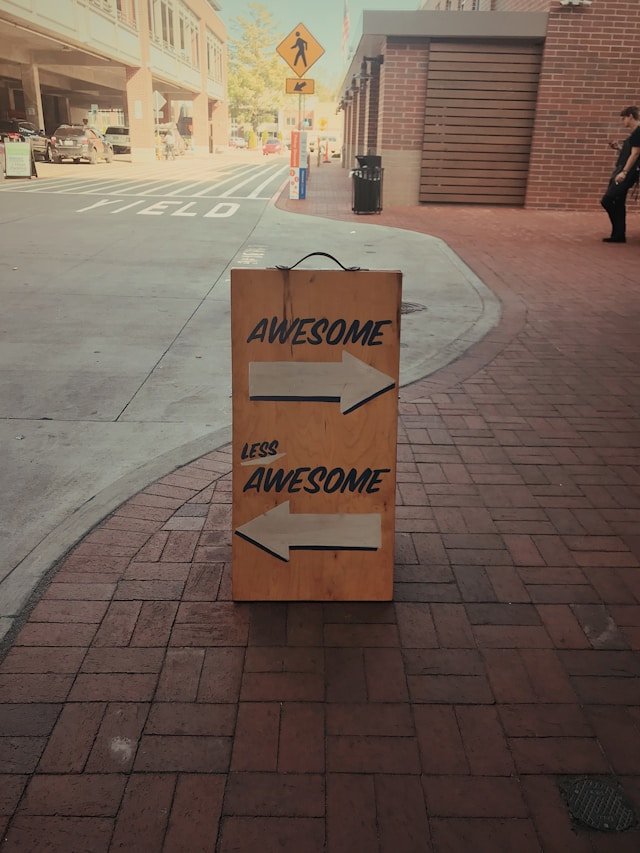The Arts World Today: Creativity Amidst the Chaos
Let’s face it: the arts world has been navigating some choppy waters lately. While creativity is bursting at the seams, the hard realities of money and changing audience habits create real roadblocks for arts organizations, especially those outside major cultural hubs. It’s no wonder arts leaders are having urgent conversations about how to innovate and adapt simply to stay afloat.
One major shift is technology, it’s not just a tool anymore, but part of the art itself. The National Endowment for the Arts even published “Tech as Art,” urging everyone to embrace digital culture, from the back office to the main stage. Going digital isn’t just about seeming modern; it’s crucial for connecting with more people. At the same time, there’s a growing understanding that working together is key. Facing funding cuts and even environmental concerns, arts groups are learning that smart partnerships can build resilience. As members of networks like ISPA (International Society for the Performing Arts) often discuss, finding fresh ways to collaborate across generations and sectors is vital.
But when it comes to getting the word out, many arts organizations stumble. They know they need to connect with audiences, and slicing up the market to target specific groups (audience segmentation) is a smart tactic. Yet, truly effective marketing often feels like an unsolved puzzle. In the end, today’s arts landscape is a whirlwind of passion, innovation, and adaptation. Organizations are constantly fighting to prove their value in a noisy world, trying to make their voices heard above the economic pressures.
Understanding the Marketing Paradox: Got the Tools, But Can’t Use Them?
Here’s the strange thing happening in the arts: organizations often have exactly what they need to survive , compelling stories, passionate creators, unique experiences, yet they struggle to “sell” these lifelines to an industry gasping for air. Why? For many artists and the organizations that support them, “marketing” feels like a dirty word. It conjures images of selling out, dumbing down the vision just to get bums on seats. This resistance runs deep, stemming from a noble belief that art should be pure and untainted by commerce. But in today’s world, that ideal is bumping up hard against the need to pay the bills.
Nonprofit arts groups especially seem to miss how critical marketing is. It’s not just about selling tickets or pleading for donations; it’s about building relationships, sharing the mission, and creating a sustainable future. Too often, marketing is seen as just another expense, rather than the engine that can power the organization forward. This mindset holds them back from truly connecting with the people they want to reach and securing the support they desperately need.
Collaboration often gets touted as the magic bullet, but partnerships need careful handling to actually work. Joining forces requires understanding the give-and-take to truly leverage shared strengths. Done right, sharing resources and know-how can seriously boost marketing power and reach. The recent pandemic threw this all into sharp relief. COVID-19 didn’t just disrupt performances; it blew up traditional marketing plans, forcing a rapid scramble towards digital tools and online engagement just to stay connected when physical doors were closed.
Despite the obvious need for smart marketing, the arts sector keeps wrestling with tight budgets and a lingering hesitation to fully embrace it. This is the marketing paradox: holding the keys to survival but struggling to turn the lock. Balancing artistic integrity with the practical need to stay viable is the tightrope walk arts organizations must master.
Why Old-School Marketing Often Misses the Mark
Traditional marketing approaches have always sat uncomfortably in the arts world. Many artists worry that slick campaigns compromise their vision, turning art into a commodity pandering to the lowest common denominator. This fear makes it tough for organizations to adopt strategies that could be their lifeline.
Beyond the philosophical hang-ups, old marketing tactics often just don’t work anymore. They weren’t designed for today’s lightning-fast digital world or the pandemic-accelerated shift to remote work and online everything. Back in 2009, when the economy tanked and arts audiences dipped, many chalked it up to a temporary blip. Few recognized it as a sign that their marketing playbook was fundamentally outdated.
Furthermore, many nonprofits, arts included, lack a truly strategic approach to marketing and communications. They see it as an overhead cost, not a core function tied to their mission. This leads to haphazard efforts and missed chances, instead of adaptive, goal-focused planning that could actually show results and justify investment. Plus, let’s be honest, traditional ads and mailers often fail to spark the kind of genuine connection needed in the digital age. Arts organizations need to lean into digital tools that foster real dialogue and relationships between artists and audiences. Without that shift, old methods fall flat, leaving the arts stuck in that paradox, needing the tools but wary of their perceived cost to identity.
Fresh Thinking: Marketing Alternatives for the Arts
In the ever-shifting arts scene, sticking to the old marketing playbook rarely cuts it. As money gets tighter, finding new, creative ways to connect isn’t just nice, it’s necessary. Blending art and marketing isn’t a new concept, but the ways we can do it are constantly expanding.
- Immersive Marketing: Step Inside the Story
Think beyond flyers and ads. Immersive or engagement marketing uses tech like augmented reality (AR), virtual reality (VR), and captivating live events to pull people into an experience. Instead of just watching, they participate, forging a much deeper connection. The arts are a natural fit for this – imagine turning a gallery visit into an interactive journey (like the wildly popular Van Gogh experiences) or using AR to bring characters to life on stage. It’s about creating memorable, emotional moments. - Digital Innovation: More Than Just a Website
Online platforms have totally changed the game. Looking ahead, digital marketing keeps evolving with smarter tools: targeted text messages, deep-dive analytics, personalized content, and hybrid events that blend online and in-person audiences. Digital spaces offer exciting ways to interact, but they need a smart strategy. Tools like Audience Access, which combine digital programs with ways for audiences to engage during and after a show, show how tech can build bridges with patrons, wherever they are. - Strategic Collaborations: Stronger Together
Working together is still one of the smartest moves an arts organization can make. Teaming up with other artists, brands, or community groups opens doors, shares costs, and gets your name out there. Think outside the box: partnerships could involve other cultural groups, local businesses, tech companies, or even entities like the International Drivers Association if the goal is to reach international visitors or touring artists who need logistical support. These alliances leverage collective power to meet community needs and connect with new faces. - Audience Segmentation: Talking to the Right People
You can’t be everything to everyone. Audience segmentation means slicing your potential audience into smaller, specific groups based on their interests, habits, or demographics. This lets you tailor your message so it actually resonates, instead of getting lost in the noise. It makes marketing more effective and helps build a more personal connection. Tools like The Audience Agency’s Audience Spectrum even provide deep insights into why people attend (or don’t), helping organizations make smarter choices.
Case Studies: Lessons from the Front Lines
In a field rocked by recent crises, arts organizations have shown incredible resilience and offered valuable lessons in marketing survival.
- Pivoting Under Pressure: The pandemic forced a massive rethink. As documented by the Arts Endowment, organizations got creative with reopening plans, showing just how adaptable they could be. The crisis highlighted the urgent need to reassess old ways of doing business, zero in on key audiences, and not be afraid to make big changes.
- Winning with Audience Focus: Keeping audiences engaged became paramount. The Wallace Excellence Awards recognized organizations that succeeded by truly listening to their communities, understanding when change was needed, and putting audiences at the heart of their strategies. It wasn’t just about keeping loyal patrons happy but actively finding ways to welcome new ones.
- When Old Tactics Fizzle: Not every idea worked. Many groups found that pouring money into traditional paid advertising simply wasn’t delivering results anymore. This painful discovery pushed them to explore more community-focused, grassroots strategies, though finding the perfect blend remains a challenge.
- The Power of Experience: Faced with the limits of old methods, some turned to immersive art to wow audiences. Weaving these multi-sensory experiences into marketing marked a shift from passively consuming art to actively participating in it. Think of those walk-through Van Gogh exhibits, they transformed gallery-going into an event, deepening the connection through sheer sensory engagement.
These stories paint a picture of a complex reality. While innovation is happening, the struggle highlighted by the marketing paradox, trying to sell survival tools to an industry already underwater is real. The lessons learned are shaping the future.
Strategies for Arts Organizations: Charting a Course Forward
For arts organizations trying to stay afloat and eventually thrive, relying on passion alone isn’t enough. A mix of smart, strategic actions is needed to navigate the financial instability, shifting audience tastes, and the digital surge.
- Embrace Strategic Planning (Seriously): A solid strategic plan isn’t a dusty document; it’s a living roadmap. It means setting clear financial goals, budgeting wisely, making the most of every resource, and getting everyone staff, board, volunteers on the same page about the mission. This kind of planning builds long-term stability and helps organizations connect authentically with their communities. And crucially, it needs to be flexible, ready to adapt when things inevitably change.
- Get Smart with Audience Segmentation: In the digital age, knowing your audience deeply is non-negotiable. Dividing them into specific groups lets you tailor what you offer and how you talk about it, making your efforts far more effective. Smart segmentation improves marketing, boosts engagement, builds loyalty, and ultimately helps expand your reach.
- Explore Creative Collaborations: Don’t go it alone. Partnering with other artists, businesses, or community groups can amplify your impact, stretch your resources, and spark new ideas. Collaborations foster innovation, create exciting new programs, and get your work in front of fresh eyes.
- Dive into Experiential Marketing: Move beyond just telling people about art; let them experience it. Using immersive tech like AR/VR or creating unique, hands-on events can forge powerful emotional connections. It’s about making audiences active participants, leaving a much stronger impression than a passive viewing ever could.
- Master Your Digital Platforms: Digital isn’t just an add-on; it’s essential. Websites, social media, email, streaming, these tools are vital for reaching wider audiences, breaking down geographical barriers, and keeping art accessible. Embracing digital isn’t just about technology; it’s a strategic necessity for survival and growth.
A Call to Action: Thrive, Don’t Just Survive
The challenges facing the arts are significant, but so are the opportunities. It’s time for arts organizations to shift from a survival mindset to one focused on long-term thriving. Let’s harness the power of smart collaborations to share resources, cut costs, and reach further than ever before. Let strategic planning be the compass that guides decisions, keeping the mission clear while adapting to new realities.
Let’s build organizations that are ready for anything, equipping our teams with the skills and strategies needed to navigate the unexpected. The arts are vital to society; let’s ensure they flourish.










